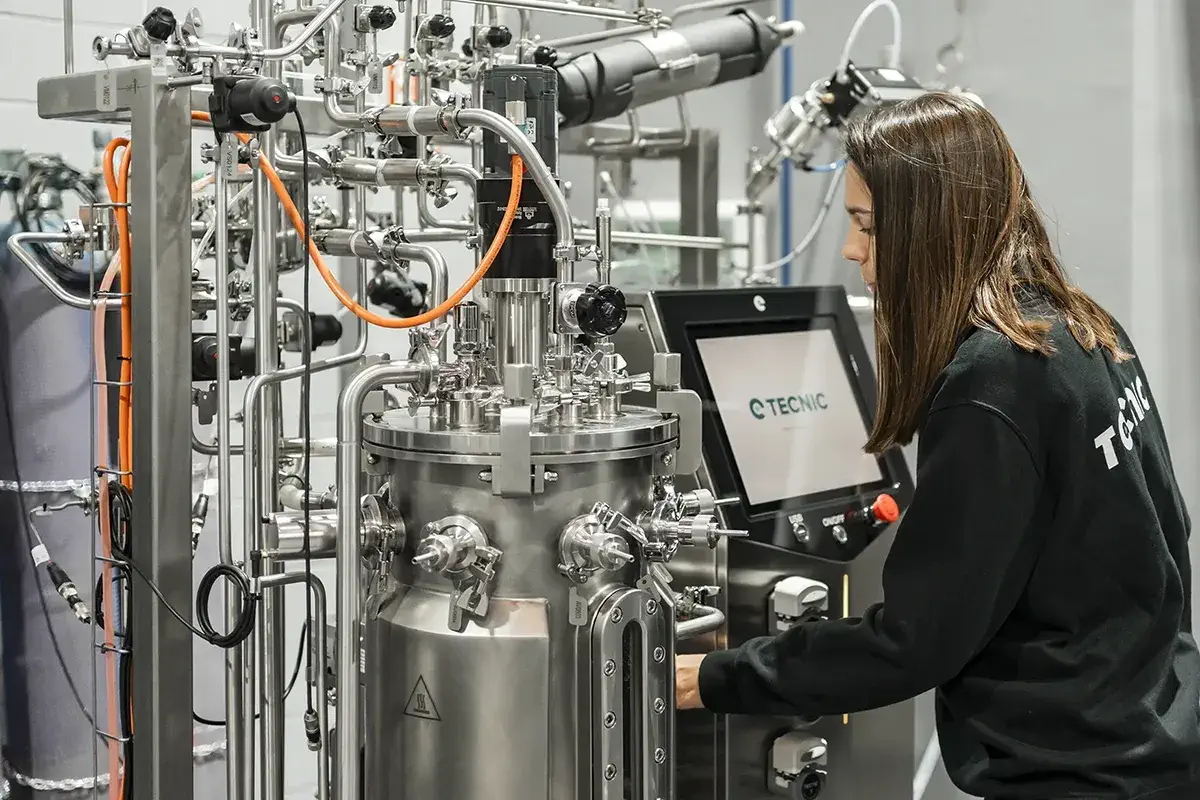Bioreactors are central to biotechnology, offering controlled environments for cultivating cells, microbes, and biologics. In 2025, advances in engineering, monitoring, and design have transformed bioreactors from simple vessels into highly automated, scalable systems that support research, manufacturing, and sustainability initiatives.

Importance: Why Bioreactor Innovation Matters Today
-
Automation & Precision: Modern systems manage critical parameters like pH, temperature, and nutrient supply with precision, improving consistency and reducing human error.
-
Efficiency & Scale: Continuous production modes and single-use designs enhance throughput, faster turnover, and cleaner operations.
-
Sustainability: Eco-conscious materials and reduced energy usage are lowering the carbon footprint of bioprocessing.
-
Enhanced Monitoring: Advanced sensors enable real-time control of culture conditions, boosting product quality and yield.
-
Design Flexibility: Custom and modular designs—enabled by digital twins and 3D printing—support rapid prototyping and scale-up.
Recent Updates: Innovations in Bioreactor Technology (2024–2025)
-
Cloud-Integrated Mobile Bioreactors: Remote control, automation, and real-time monitoring reduce costs by up to 16% and accelerate development by nearly 25%, significantly improving scale-up success rates.
-
Optical & Electrical Smart Sensors: Miniaturized optical chemosensors and electrochemical sensors now allow real-time tracking of oxygen, pH, glucose, and cell growth, enhancing process control.
-
Single-Use Bioreactors: Disposable setups reduce contamination risks, cleaning needs, and validation costs—offering up to a 60% cost advantage over traditional stainless systems.
-
Perfusion & Multi-Compartment Designs: Perfusion systems enable steady nutrient flow, ideal for high-density cultures; multi-compartment reactors support co-culture and gradient simulations.
-
3D Printing & Microfluidic Mini Bioreactors: Custom bioreactor components and high-throughput microreactor arrays accelerate research and reduce resource use.
-
Digital Twin & AI Integration: Virtual replicas of bioreactors, integrated with AI and sensors, enable predictive maintenance, process optimization, and remote operations.
-
Sustainable Bioprocessing Approaches: Innovations include renewable substrate-based bioreactors, anaerobic digesters for waste valorization, and closed-loop nutrient systems that align with circular economy principles.
Laws and Standards Influencing Bioreactor Systems
-
Bioprocess Standards: Industry standards such as ISO/ASTM ensure consistency and safety in bioreactor operations.
-
Environmental Regulations: Focus on resource conservation, waste reduction, and energy efficiency is guiding sustainable design decisions.
-
Quality Assurance: Biopharma manufacturers must meet stringent validation, sterilization, and traceability requirements.
Tools and Resources for Bioreactor Development
-
Digital Twins and CFD Modeling Tools: Enable virtual design, troubleshooting, and scaling decisions.
-
Modular Bioreactor Platforms: Offer plug-and-play flexibility across R&D and production stages.
-
Smart Sensor Suites: Support key parameter monitoring like biomass, metabolites, and dissolved gases in real time.
-
AI and Machine Learning Tools: Assist in optimizing strain selection, process parameters, and scale-up strategies via predictive analytics.
-
3D Printing for Rapid Prototyping: Speeds up customization of bioreactor parts and impellers.
Checklist: Choosing the Right Modern Bioreactor
-
Supports automation and remote monitoring
-
Includes smart, real-time sensors for key parameters
-
Offers single-use or modular options for flexibility
-
Scalable from lab to industrial production
-
Designed with eco-friendly materials and processes
-
Compatible with AI optimization tools and digital twins
-
Meets regulatory and quality standards
FAQs on Modern Bioreactor Systems
Q1. What’s the benefit of single-use bioreactors?
They cut down cleaning and sterilization steps, reduce contamination risks, and lower validation complexity.
Q2. How do digital twins improve bioprocessing?
They simulate real-world bioreactor behavior to optimize performance, reduce downtime, and aid scale-up decisions.
Q3. Can smart sensors detect metabolic shifts in real time?
Yes—advanced optical and electrochemical sensors provide real-time insights into metabolites, cell growth, and culture health.
Q4. Why use perfusion bioreactors?
They maintain cell viability longer by continuously supplying nutrients and removing waste—great for high-yield applications like antibody production.
Q5. How does sustainability factor into bioreactor design?
New designs focus on reducing energy consumption, cutting water use, and incorporating renewable materials that support greener biomanufacturing.
Conclusion: The Future of Bioprocessing
Modern bioreactor systems are revolutionizing biomanufacturing with automation, sustainability, and smart insights. In 2025, the convergence of single-use technologies, AI, digital twins, and novel sensor integration is enhancing efficiency, reliability, and adaptability across applications—from cell therapies to environmental biotechnology. Businesses embracing these innovations are poised to scale seamlessly, adopt sustainable operations, and lead in bioprocess evolution.